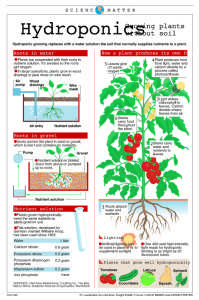By Maggie Aldrich
Staff Writer
In James Maloney’s AP Environmental class, there will now be a futuristic method of plant growing. Hydroponics, a way to grow plants without soil, has recently been installed in his classroom.
There are many forms of hydroponic systems in the plant growing world; the type in Maloney’s class is identified as a wick system. “It’s a custom built apparatus in which we’re going to have netted cups sitting into a flow stream which will pump every time interval of the hour, so were going to experiment with it and see how it goes,” Maloney said.
A wick system contains four main parts: a grow tray, a reservoir, some sort of aeration system, and the most important of all, the wicks.
The grow tray’s main purpose is to hold the seeds that are planted into it. The reservoir sits beneath the grow tray and directly supplies the plants with water and nutrients.
The air stone and pump are a part of the aeration system and both do their part to supply the water with oxygen in order for the plant’s roots to dry. Last but certainly not least, the wicks provide nutrients to the roots. In most wick systems, they usually carry one to two wicks and sit in the grow tray.
Maloney’s intent is to use the system early in the spring season of 2016 for first testing simple plants such as kale, lettuce, and baby broccoli.
“I’m looking forward to next year to understand more about hydroponics, especially since it is such a unique way to grow plants,” said freshman Evelyn Alexander who is taking AP Environmental next year.
Plants undergoing hydroponics grow much faster than plants growing in soil since they are receiving direct nutrients.
“AP Environmental science, one of our curriculum aspects, is on agricultural foods and soil conservation, so by looking at alternatives to soil for agriculture we’re looking at ways to conserve soil hands on in classroom activity,” said Maloney.








